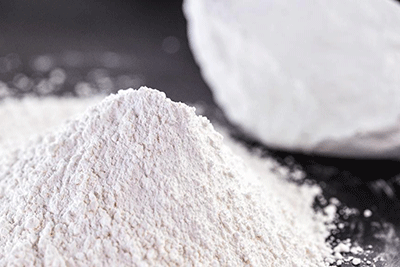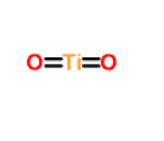


| Item | Index |
|---|---|
| Appearance | White powder |
| TiO2 content | 94.0% |
| Moisture | ≤0.5% |
| PH | 6.0-8.0 |
| Oil absorption | ≤21g/100g |
| Residue(45 μm) | ≤0.05% |
| Key features: |
1)Excellent whiteness and glossiness 2)Higher lightening power 3)Medium weather resistance and heat resistance 4)Low oil absorption, good dispersion 5)Dry powder has good fluidity |
| Recommended applications: | Mainly used for papermaking, plastic tube, plastic film, etc |
| Packing | In 25KG /500KG /1000KG bag or as per customer’s requirement |
|---|---|
| Storage | This product should not be stored outside or exposed to temperature extremes or to moisture.
To ensure optimum performance, it is recommended that the product is used on a first in, first out basis from receipt of shipment. |
Tel: 0086-25-52397808
E-mail: info@titanium-dioxide.net


| Common Names | TITANIUM DIOXIDE | ||
|---|---|---|---|
| Structure |

|
||
| CAS No. | 13463-67-7 | Boiling Point (℃) | 2900 |
| Molecular Weight | 79.866 | Melting Point (℃) | 1840 |
| Appearance | white powder | Bulk density | 3.84 |
| HS Code | 3206111000 | Flash Point (℃) | 2500-3000 |
| Safety Phrases | S2;S25;S26;S36;S36/S37 | ||
|---|---|---|---|
| RIDADR | No hazardous good according to the regulation. | ||
| WGK Germany | NONE | ||
| Packaging Group | NONE | ||
| Hazard Class | NONE | ||
| SYMPTOMS | PREVENTION | FIRST AID | |
| Inhalation | Cough. Sore throat. Redness. Burning sensation. Itching. | Use local exhaust or breathing protection. | Fresh air, rest. |
| Eyes | Redness. Pain. | Protective gloves. | Rinse opened eye for several minutes under running water. Then consult a doctor. |
| Ingestion | Abdominal pain. Nausea. Vomiting. | Do not eat, drink, or smoke during work. Wash hands before eating. | Rinse mouth. Induce vomiting (ONLY IN CONSCIOUS PERSONS!). Refer for medical attention . |
NR930 is a rutile grade titanium dioxide pigment that is manufactured using the sulfate method. Titanium dioxide (TiO2) is a widely used white pigment due to its excellent light-scattering properties, high opacity, and brightness. Rutile and anatase are the two main crystal forms of titanium dioxide, with rutile being more preferred in many applications due to its higher durability and stability.
The sulfate method of producing titanium dioxide involves the following steps:
1. Sulfation: In this step, ilmenite ore (iron titanium oxide) or another titanium-containing material is reacted with sulfuric acid (H2SO4). This process produces a titanium sulfate solution.
2. Hydrolysis: The titanium sulfate solution is hydrolyzed, typically by adding water, resulting in the formation of a hydrated titanium dioxide precipitate.
3. Calcination: The precipitated titanium dioxide is then subjected to high-temperature calcination. This process removes water and impurities, and the final pigment particles take on the rutile crystal structure.
The NR930 rutile grade titanium dioxide pigment is specifically designed for various applications, including:
1. Masterbatch: Masterbatch is a concentrated mixture of pigments and/or additives dispersed in a carrier polymer. It is used to impart color or specific properties to plastics in a wide range of industries.
2. PE Plastic Film: PE (Polyethylene) plastic film is a commonly used material in packaging applications. Titanium dioxide is added to improve the film's opacity, brightness, and UV resistance.
3. Solvent-Based Ink: Titanium dioxide is used as a white pigment in solvent-based inks, providing excellent color opacity and printability.
The specific characteristics and properties of NR930 may vary depending on the manufacturer, but generally, rutile grade titanium dioxide pigments are known for their high tinting strength, brightness, and resistance to weathering.